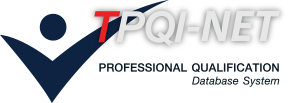หน่วยสมรรถนะ
Test and troubleshoot aircraft fixed wing flight control systems and components.
สาขาวิชาชีพการบิน
รายละเอียดหน่วยสมรรถนะ
| 1. รหัสหน่วยสมรรถนะ | AVT-VLDM-230A |
| 2. ชื่อหน่วยสมรรถนะ | Test and troubleshoot aircraft fixed wing flight control systems and components. |
| 3. ทบทวนครั้งที่ | / |
| 4. สร้างใหม่ |
|
ปรับปรุง |
|
| 5. สำหรับชื่ออาชีพและรหัสอาชีพ (Occupational Classification) | |
|
7232 Aircraft engine mechanics and fitters |
|
| 6. คำอธิบายหน่วยสมรรถนะ (Description of Unit of Competency) | |
| This skill unit requires the use of workforce skills and use of maintenance publications and basic knowledge of the theory of the system to inspect, test and troubleshoot fixed wing the system components of the flight control aircraft during the scheduled execution or unscheduledmaintenance. Maintenance can be performed individually or as part of a team. | |
| 7. สำหรับระดับคุณวุฒิ |
| 1 | 2 | 3 | 4 | 5 | 6 | 7 | 8 |
|---|---|---|---|---|---|---|---|
| 8. กลุ่มอาชีพ (Sector) | |
| 7232 Aircraft Mechanics | |
| 9. ชื่ออาชีพและรหัสอาชีพอื่นที่หน่วยสมรรถนะนี้สามารถใช้ได้ (ถ้ามี) | |
| N/A | |
| 10. ข้อกำหนดหรือกฎระเบียบที่เกี่ยวข้อง (Licensing or Regulation Related) (ถ้ามี) | |
| ICAO Doc 7192 / EASA Part 66 | |
| 11. สมรรถนะย่อยและเกณฑ์การปฏิบัติงาน (Elements and Performance Criteria) |
| หน่วยสมรรถนะย่อย (EOC) | เกณฑ์ในการปฏิบัติงาน (Performance Criteria) | รหัส PC (ตามเล่มมาตรฐาน) |
รหัส PC (จากระบบ) |
|---|---|---|---|
| 101412.01 Inspect fixed wing flight control systems and components. |
101412.01.01 Isolation tags already attached to the system or related systems are checked and aircraft configured for safe system inspection and operation in accordance with applicable maintenance manual. |
101412.01.01 | 199364 |
| 101412.01 Inspect fixed wing flight control systems and components. |
101412.01.02 Fixed wing flight control systems and components are visually or physically checked for signs of defects in accordance with the applicable maintenance manual while observing all relevant work health and safety (WHS) requirements. |
101412.01.02 | 199365 |
| 101412.02 Test fixed wing flight control systems. |
101412.02.01 Powered controls of the aircraft and system are prepared in accordance with maintenance manual for the application of electrical and hydraulic power. |
101412.02.01 | 199366 |
| 101412.02 Test fixed wing flight control systems. |
101412.02.02 Power is applied, if necessary, and system is functionally tested in accordance with applicable maintenance manual for malfunction or evidence of incorrect rigging. |
101412.02.02 | 199367 |
| 101412.02 Test fixed wing flight control systems. |
101412.02.03 System rigging is performed in accordance with applicable maintenance manual. |
101412.02.03 | 199368 |
| 101412.03 Prepare for troubleshooting, and troubleshoot fixed wing flight control systems. |
101412.03.01 Relevant maintenance documentation and modification status, including system defect reports, where relevant, are interpreted to identify an unserviceability, and available information from maintenance documentation and inspection and test results is used, where necessary, to assist in fault determination. |
101412.03.01 | 199369 |
| 101412.03 Prepare for troubleshooting, and troubleshoot fixed wing flight control systems. |
101412.03.02 Maintenance manual fault diagnosis guide and logical processes are used to ensure efficient and accurate troubleshooting to line replacement level and specialist advice is obtained, where required, to assist with the troubleshooting process. |
101412.03.02 | 199370 |
| 101412.03 Prepare for troubleshooting, and troubleshoot fixed wing flight control systems. |
101412.03.03 Fixed wing flight control system faults are located and the causes of the faults are clearly identified and correctly recorded in maintenance documentation, Where required, and fault rectification requirements are determined to assist in planning the repair. |
101412.03.03 | 199371 |
| 12. ความรู้และทักษะก่อนหน้าที่จำเป็น (Pre-requisite Skill & Knowledge) | |
|
N/A |
|
| 13. ทักษะและความรู้ที่ต้องการ (Required Skills and Knowledge) | |
|
(ก) ความต้องการด้านทักษะ See Appendix A (ข) ความต้องการด้านความรู้ See Appendix A |
|
| 14. หลักฐานที่ต้องการ (Evidence Guide) | |
|
(a) Performance Evidence (b) Knowledge Evidence |
|
| 15. ขอบเขต (Range Statement) | |
|
This field allows for different work environments and conditions that may affect performance. Essential operating conditions that may be present (depending on the work |
|
| 16. หน่วยสมรรถนะร่วม (ถ้ามี) | |
| N/A | |
| 17. อุตสาหกรรมร่วม/กลุ่มอาชีพร่วม (ถ้ามี) | |
| N/A | |
| 18. รายละเอียดกระบวนการและวิธีการประเมิน (Assessment Description and Procedure) | |
|
The assessment are based on combination of paper exams, interviewing, and practical demonstrations depending on the assessors’ judgement.Competency should be assessed in the work environment or simulated work environment,using tools and equipment specified in aircraft maintenance manuals. It is also expectedthat applicable general-purpose tools, test and ground support equipment found in mostroutine situations would be used where appropriate. |
|
